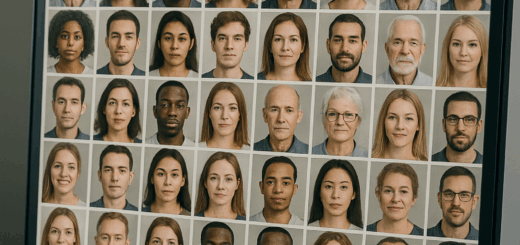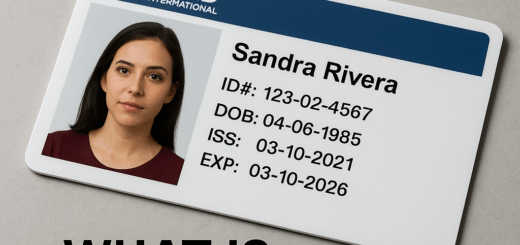What Is iBeta Level 2 Dataset?
The iBeta Level 2 dataset is the advanced dataset used in Level 2 Presentation Attack Detection (PAD) testing. It builds on the Level 1 dataset by introducing more sophisticated spoofing attempts, requiring biometric systems to demonstrate higher resilience against skilled, well-funded attackers.
This dataset is part of the ISO/IEC 30107-3 testing standard and is widely recognized as a global benchmark for advanced biometric liveness detection.

1. Purpose of the iBeta Level 2 Dataset
The Level 2 dataset is designed to:
- Simulate professional-grade spoofing attempts that use time, money, and expertise.
- Test advanced liveness detection in biometric systems.
- Differentiate basic solutions from high-security systems.
Provide certification credibility for industries where security stakes are highest, such as finance, defense, and healthcare.
2. Composition of the Level 2 Dataset
Like Level 1, the dataset contains both genuine and spoof samples, but the spoof artifacts are far more advanced.
- Genuine Biometric Samples
- Collected from real subjects across diverse demographics.
- Used to ensure legitimate users can still authenticate smoothly.
- Advanced Spoof Samples
- Created using specialized tools and materials.
- Production cost limited to USD 300 (10x more than Level 1).
- Examples include:
- 3D-printed masks
- Silicone or latex prosthetics
- Resin or composite fingerprint molds
- High-quality video replays on advanced displays
3. Testing Parameters
- Number of Subjects: At least 6 volunteers used for artifact creation.
- Timeframe: At least 48 hours allowed for attack preparation.
- Test Runs: Hundreds of spoof attempts are carried out.
- Pass/Fail Standard:
- Systems must keep spoof acceptance extremely low.
- Tolerance is stricter than Level 1, with essentially no room for error.
- Systems must keep spoof acceptance extremely low.
4. How the Dataset Challenges Biometric Systems
Level 2 spoofing attacks are designed to mimic human characteristics more convincingly. The dataset tests whether the biometric system can handle:
- Skin-like textures: Silicone or latex masks simulate pores, elasticity, and reflections.
- 3D depth cues: 3D-printed faces or masks challenge depth-based liveness checks.
- Sub-surface detection: Attacks probe whether the system can analyze under-skin structures.
- AI-driven replays: Deepfake or high-resolution video attacks target motion and dynamic detection.
5. Comparison: Level 1 vs Level 2 Dataset
| Aspect | Level 1 Dataset | Level 2 Dataset |
|---|---|---|
| Attack Complexity | Low-effort, casual attacks | High-effort, professional-grade attacks |
| Materials Cost | ≤ USD 30 | ≤ USD 300 |
| Time to Create | ≤ 8 hours | ≥ 48 hours |
| Spoof Examples | Printed photos, video replays, paper masks | 3D masks, silicone prosthetics, advanced molds |
| Subjects Involved | General volunteers | At least 6 subjects |
| Certification Tolerance | 0% spoof acceptance | Stricter thresholds, near-zero spoof acceptance |
6. Importance of Level 2 Dataset
The Level 2 dataset ensures biometric solutions are not only resistant to casual attacks but also to well-prepared, advanced threats. This is especially important for:
- Banks and fintech companies protecting high-value transactions.
- Healthcare providers securing sensitive medical data.
- Government agencies running border control and defense systems.
- Enterprises with zero tolerance for unauthorized access.
7. Benefits of Passing Level 2 Testing
- Proves advanced spoof resistance against professional attacks.
- Builds global trust and market advantage in highly regulated industries.
- Demonstrates compliance with ISO/IEC 30107-3 standards.
- Differentiates solutions from competitors that only meet Level 1 requirements.
8. Related Topics and Themes
- iBeta Level 2 dataset
- advanced PAD dataset
- ISO/IEC 30107-3 Level 2
- Level 2 biometric spoof detection
- 3D mask liveness detection dataset
- silicone spoof dataset
- iBeta certification Level 2
- advanced biometric dataset testing
Conclusion
The iBeta Level 2 dataset is the gold standard for advanced biometric liveness testing. By incorporating sophisticated, high-effort spoof artifacts, it ensures that biometric systems can withstand not just casual fraud but also skilled, well-funded attacks.
Passing Level 2 certification with this dataset is a strong competitive advantage, proving a biometric system is ready for deployment in high-security industries where trust, compliance, and resilience are essential.
FAQs
It includes high-quality spoofs such as digital screens, video replays, and 3D masks.
It validates whether biometric systems can withstand sophisticated and real-world attacks.
Enterprises in finance, government, and healthcare often need Level 2 testing for regulatory compliance.
Level 2 uses more advanced attacks that are harder to detect than basic Level 1 spoofs.


